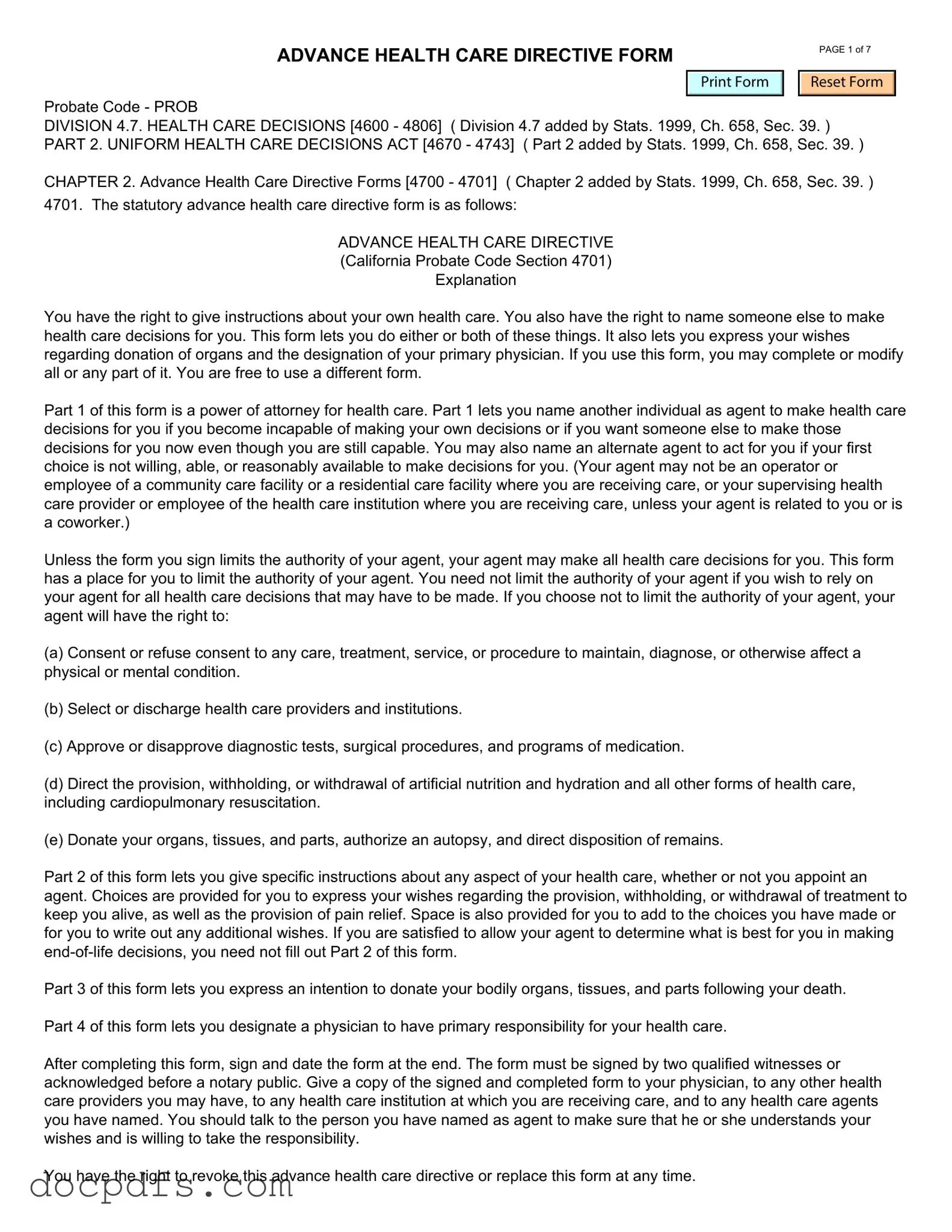What is a California Advanced Health Care Directive?
A California Advanced Health Care Directive is a legal document that allows individuals to outline their preferences for medical treatment in the event they become unable to communicate their wishes. It combines two important elements: a health care power of attorney and a living will. This directive ensures that your healthcare decisions are respected, even if you cannot express them yourself.
Who can create an Advanced Health Care Directive?
Any adult who is at least 18 years old and of sound mind can create a California Advanced Health Care Directive. This means you should understand the nature of the document and the consequences of your decisions regarding medical treatment.
What should be included in the directive?
When completing an Advanced Health Care Directive, consider including the following:
-
Your medical treatment preferences, such as life-sustaining measures and pain management.
-
The name of a health care agent, someone you trust to make decisions on your behalf if you are unable to do so.
-
Specific instructions regarding organ donation, if applicable.
-
Any other personal wishes related to your health care and end-of-life decisions.
How do I appoint a health care agent?
To appoint a health care agent, you need to clearly identify the person you trust to make decisions for you in the directive. This person should be someone who understands your values and wishes. You must also sign the document in front of a notary public or two witnesses, who must be at least 18 years old and not related to you or entitled to your estate.
Can I change or revoke my Advanced Health Care Directive?
Yes, you can change or revoke your Advanced Health Care Directive at any time, as long as you are of sound mind. To make changes, simply create a new directive or write a statement that clearly revokes the previous one. Make sure to inform your health care agent and any health care providers about the changes.
What happens if I do not have an Advanced Health Care Directive?
If you do not have an Advanced Health Care Directive and become unable to communicate your wishes, medical decisions may be made by family members or, in some cases, by a court-appointed guardian. This can lead to uncertainty and potential conflicts among family members about what you would have wanted.
Is the Advanced Health Care Directive valid in other states?
A California Advanced Health Care Directive is generally valid in other states, but it is advisable to check the specific laws of the state where you are receiving care. Some states may have different requirements or forms. If you frequently travel or live in multiple states, consider creating directives that comply with the laws of those states.
How can I ensure my wishes are followed?
To ensure your wishes are followed, communicate openly with your health care agent and family members about your preferences. Provide copies of your Advanced Health Care Directive to your health care agent, doctors, and any hospital or care facility where you may receive treatment. Regularly review and update the document as needed to reflect any changes in your wishes.
You can obtain a California Advanced Health Care Directive form from various sources. The California Secretary of State’s website provides a free downloadable version. Additionally, many hospitals, law offices, and community organizations offer printed forms and resources to help you complete the directive.
